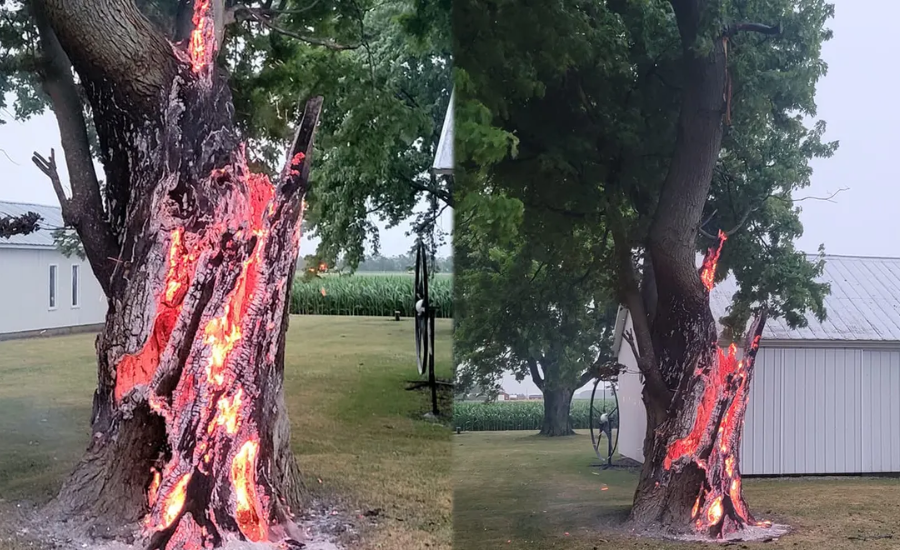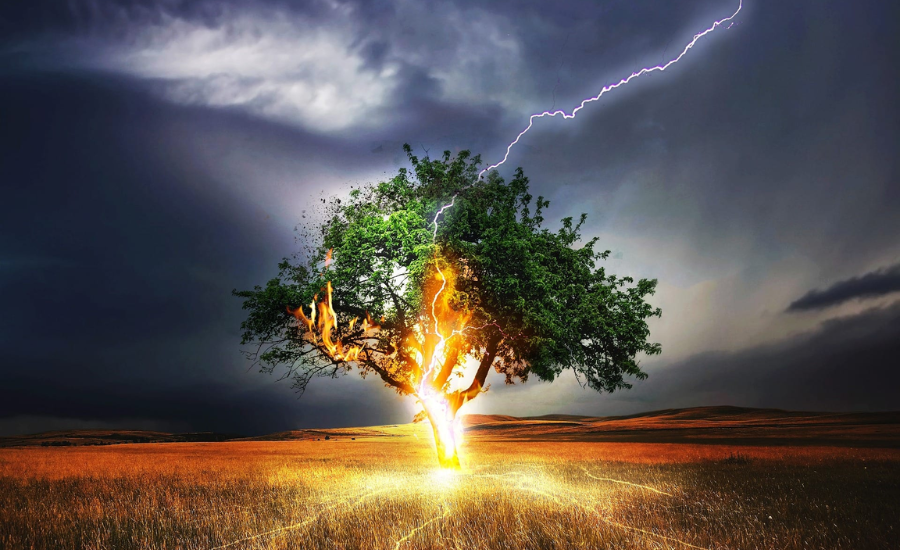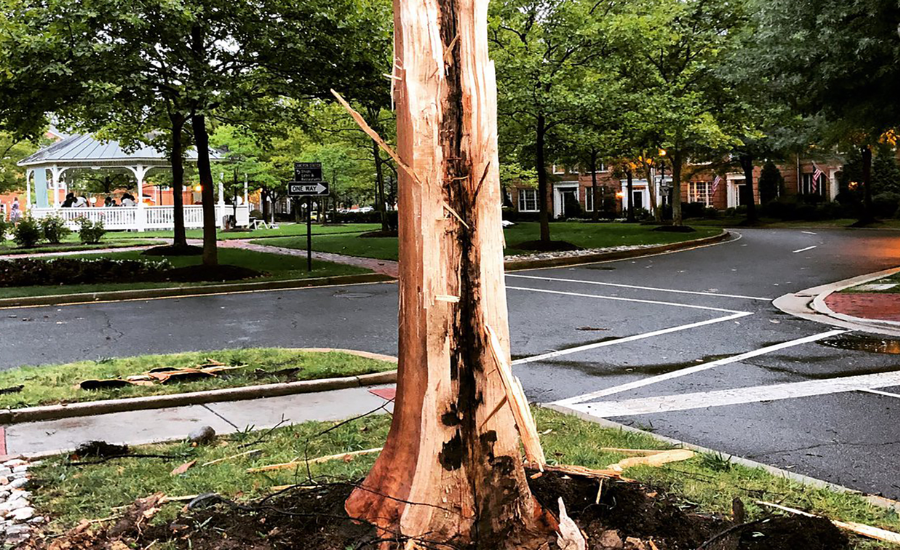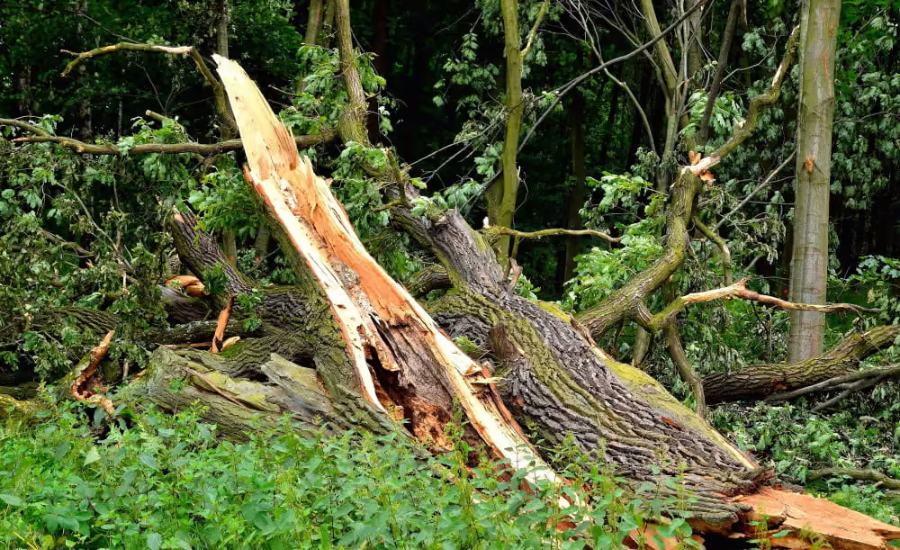Lightning strikes present a serious risk to tall trees, and every year, numerous trees become victims of this natural phenomenon. As lightning tends to strike the tallest objects in an area, trees are often the primary targets. If you discover that your tree has been struck by lightning, it’s important to know the appropriate steps to take in the aftermath. This article will guide you on what to do if you find yourself dealing with a lightning struck tree and address the pressing question: can a tree recover from a lightning strike?
Responding To A Lightning Struck Tree: Immediate Actions
When you are confronted with a lightning struck tree, the first challenge is recognizing that damage may not always be immediately apparent. If lightning strikes the top of the tree, the electrical current can travel down through the tree, potentially causing unseen damage to internal layers beneath the bark.
A tree may appear healthy for days, weeks, or even months after being struck, depending on the severity of the internal damage. Some subtle signs of distress might include wilting leaves or stunted growth, while other indications may be more noticeable.
Recognizing The Signs Of A Lightning Struck Tree

If you suspect that your tree has experienced a lightning strike, look out for the following indicators:
- Visible Splits or Cracks: Look for signs of damage like splits in the bark or cracks in the wood, which can reveal the impact of lightning.
- Hanging or Loose Branches: Branches that appear to be precariously positioned can pose a risk to safety and should be addressed immediately.
- Burned or Charred Areas: Blackened patches on the trunk or branches may indicate where the lightning impacted the tree.
Regardless of whether you are certain that your tree has been struck or just have a nagging suspicion, it is crucial to contact a professional tree care service for a thorough inspection. Any branches that are hanging precariously should be addressed right away to mitigate risks of falling debris. A certified arborist can perform a comprehensive evaluation of your tree and recommend appropriate next steps based on their findings.
Assessing Survival: Can A Tree Recover From a Lightning Strike?
You may wonder whether a tree can survive the aftermath of a lightning strike. The encouraging news is that many trees do recover from lightning-induced damage. However, several factors play a critical role in determining the likelihood of survival:
- Overall Health of the Tree: A tree that is in good health prior to the strike has a significantly higher chance of recovery compared to one that is already weakened or diseased.
- Impact Location: The specific area of the tree that was struck can greatly affect the extent of the damage and the tree’s ability to heal.
- Severity of the Damage: More extensive damage typically correlates with a reduced likelihood of survival.
- Species and Age: Certain tree species possess greater resilience to lightning strikes, while younger trees may have a better chance of recovery than their older counterparts.
It is important to note that any damage incurred can leave the tree vulnerable to pests and diseases. Therefore, it is vital to schedule an inspection with a certified arborist to determine the tree’s health and recovery prospects.
The Role Of Tree Cabling and Bracing
In situations where a tree has sustained damage, tree cabling and bracing may be viable options to provide additional support. This can help stabilize the tree and improve its chances of survival.
Proactive Measures: Lightning Protection for Trees

If you are concerned about the risk of a lightning struck tree but haven’t yet experienced any damage, consider investing in tree lightning protection services. This proactive approach is especially useful for homeowners with large trees on their property.
A certified arborist can assess your trees and decide whether installing a lightning protection system would be beneficial. While such systems cannot prevent lightning strikes, they can effectively channel the electrical charge into the ground, reducing the potential for tree damage and lowering the risk of injury to people or property nearby.
Importance of Regular Inspections
Once a lightning protection system is in place, it is essential to have it installed and routinely inspected by a certified arborist. Regular maintenance ensures that the system operates correctly and continues to provide adequate protection.
Peace Of Mind In The Face of Lightning Damage

The prospect of lightning damage to your trees can be alarming. Whether you have already dealt with a lightning struck tree or are considering preventive measures, seeking professional guidance is always a smart decision.
A reputable tree care company with certified arborists can conduct a thorough assessment of your tree, offering tailored solutions based on their expertise. This professional support can help alleviate concerns and allow you to enjoy your outdoor space without the burden of worry.
Ultimately, you should not have to live in fear of lightning affecting your trees. With the right professional assistance, you can focus on enjoying your property to the fullest and cultivating a safe and beautiful environment.
Frequently Asked Questions
1. What should I do immediately after my tree is struck by lightning?
After a lightning strike, inspect the tree for visible signs of damage, such as cracks in the bark, hanging branches, or charred areas. It’s crucial to contact a certified arborist for a professional evaluation and to address any safety concerns, especially regarding unstable branches.
2. Can a tree survive after being struck by lightning?
Yes, many trees can recover from lightning strikes, especially if they are healthy prior to the incident. The survival rate depends on factors such as the extent of the damage, the part of the tree that was struck, and the tree’s species and age.
3. What are the signs of internal damage in a lightning-struck tree?
Internal damage may not be immediately visible. Look for signs like wilting leaves, sparse growth, or delayed leafing out in spring. Visible bark damage, such as splits or cracks, can also indicate internal issues.
4. Should I remove a tree that has been struck by lightning?
Not necessarily. Many trees can be treated and rehabilitated after a lightning strike. However, a certified arborist can provide the best advice on whether the tree should be removed or if it can be saved.
5. What is tree cabling and bracing, and when is it needed?
Tree cabling and bracing are techniques used to provide additional support to damaged trees. This is particularly useful if a tree has suffered structural damage but has the potential to recover. An arborist can determine if these methods are appropriate for your tree.
Conclusion
Dealing with the aftermath of a lightning strike on a tree can be daunting, but understanding the proper steps to take can make the process more manageable. Recognizing the signs of damage, seeking professional help, and exploring protective measures are essential actions for any property owner.
Many trees can recover from lightning strikes, particularly when proactive steps are taken to assess and address potential damage. Consulting with a certified arborist will not only provide you with peace of mind but also help ensure the health and safety of your trees for years to come. By staying informed and prepared, you can confidently enjoy your outdoor space, free from the fear of lightning-related incidents.
Stay informed with the latest news and updates on Brooktaube
